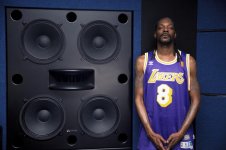The 105dB is for incidental peaks I presume?
This is for a single 8 ohm woofer (one of my woofers in approx. 190l cab.):
114.5 dB at 1 m. Xmax = 2.5 mm. P = 36.0 W.
Max. current through the VC varies between 2.67 and 2.74A
Calculated thermal attenuation: 1.9 dB
For me this is irrelevant though, I cherish my hearing.
This is for a single 8 ohm woofer (one of my woofers in approx. 190l cab.):
114.5 dB at 1 m. Xmax = 2.5 mm. P = 36.0 W.
Max. current through the VC varies between 2.67 and 2.74A
Calculated thermal attenuation: 1.9 dB
For me this is irrelevant though, I cherish my hearing.
Last edited:
Same (theoretical) exercise for a single Faital 15PR400 - 8 Ohms (same cab. and port tuning):
120.0 dB with 1 speaker at 1 m. Xmax = 5.8 mm. P = 157.3 W.
Max. current through the VC varies between 5.74 and 6.89A
Calculated thermal attenuation: 3.1 dB
The 114.5 (for my woofer) and 120.0 dB (15PR500) are theoretical max. levels without thermal attenuation.
120.0 dB with 1 speaker at 1 m. Xmax = 5.8 mm. P = 157.3 W.
Max. current through the VC varies between 5.74 and 6.89A
Calculated thermal attenuation: 3.1 dB
The 114.5 (for my woofer) and 120.0 dB (15PR500) are theoretical max. levels without thermal attenuation.
Last edited:
The 105dB is for incidental peaks I presume?
This is for a single 8 ohm woofer (one of my woofers in approx. 190l cab.):
114.5 dB at 1 m. Xmax = 2.5 mm. P = 36.0 W.
Max. current through the VC varies between 2.67 and 2.74A
Calculated thermal attenuation: 1.9 dB
For me this is irrelevant though, I cherish my hearing.
105 dB / ch peak is reference, though I would never watch a full movie at those levels.
I also cherish my hearing, I wear earplugs daily, and also around home for tasks like mowing lawns, grinding, sawing, hammering, drilling, etc.
105 dB / ch peak is reference, though I would never watch a full movie at those levels.
That's what I figured
FWIW:
"P" in my comparison above, is the minimum (calculated) peak power from the amp for the impedance of the woofer in the cab at Fb.
Great discussion, I really don't have much to add at this this point or ask =/
I was wondering how to measurements that to result o the polar response charts. I see the guys angle guide above, I'd that, that, has something to do with it.
Ro808 I am concerned about distortion, this project and pretty much the jbl M2 is designed around IMD, and avoiding it. HIgh efficiency woofer, result in the lack of thermal compression right? I aimed at originally finding a 16ohm driver, because, once again, less distortion. I might run the woofers in series just to get there. You'll have clue me in.
The Jbl 2226 would of been a nice driver for this project, I really would have appreciated the smaller cabinet. The AE TD15m does have the specs in the order that I wanted them, lower mms, higher bl, lower inductance. Add the 2216ND to the list and the 15PR400 (16ohm) and a few others; they all plot almost identical, on the excursion plot when the forced to flat response tab is used. I based my choices off of the excursion of the the 2216nd to begin with, IMD vs excursion vs bandwidth is the name of the game and the M2 has set the "standard" in so many words for the popular crowd, I'm sure the more elite crowd knows better. Then for good measure, and the potential to run a 3 way or 2.2 system, depending on how you look at it, I added another woofer
The JBls, I think, may have better control in the bass region, and AE, a little better top...either way, for the money, AE has jbl beat.
I was wondering how to measurements that to result o the polar response charts. I see the guys angle guide above, I'd that, that, has something to do with it.
Ro808 I am concerned about distortion, this project and pretty much the jbl M2 is designed around IMD, and avoiding it. HIgh efficiency woofer, result in the lack of thermal compression right? I aimed at originally finding a 16ohm driver, because, once again, less distortion. I might run the woofers in series just to get there. You'll have clue me in.
The Jbl 2226 would of been a nice driver for this project, I really would have appreciated the smaller cabinet. The AE TD15m does have the specs in the order that I wanted them, lower mms, higher bl, lower inductance. Add the 2216ND to the list and the 15PR400 (16ohm) and a few others; they all plot almost identical, on the excursion plot when the forced to flat response tab is used. I based my choices off of the excursion of the the 2216nd to begin with, IMD vs excursion vs bandwidth is the name of the game and the M2 has set the "standard" in so many words for the popular crowd, I'm sure the more elite crowd knows better. Then for good measure, and the potential to run a 3 way or 2.2 system, depending on how you look at it, I added another woofer
The JBls, I think, may have better control in the bass region, and AE, a little better top...either way, for the money, AE has jbl beat.
Ro808 I am concerned about distortion, this project and pretty much the jbl M2 is designed around IMD, and avoiding it. HIgh efficiency woofer, result in the lack of thermal compression right? I aimed at originally finding a 16ohm driver, because, once again, less distortion. I might run the woofers in series just to get there. You'll have clue me in.
To have low IMD, you need low cone excursion. Horn loading, or large radiation area is key here. Vented cabinets can also help compared to sealed cabinets.
Thermal compression: Tom Danley has a vast array of posts on different forums on this subject, to condense it down, thermal compression starts to set in around 1/10th of the AES power handling.
Higher velocity ( higher losses, too! ) ports exhibited better cooling of the enclosure, exchanging more air from inside the enclosure. This has been documented in an AES paper, IIRC from JBL.
I'd suggest a large port cross sectional area instead, a too small port has losses and the trade-off of output for cooling isn't necessary in most applications.
Why would an arbitrary impedance number like 16 ohms reduce distortion? Is there any factual basis? A real world amplifier has voltage and current limits, and as long as you aren't hitting them, life is good.
Higher impedance will require higher voltages for the same sound pressure level, but again unless you are running the amplifier in a region where it's not happy, life is good.
Why would an arbitrary impedance number like 16 ohms reduce distortion? Is there any factual basis? A real world amplifier has voltage and current limits, and as long as you aren't hitting them, life is good.
I'd say the difference lies mostly within the amp performance because the linearity of the output devices is usually better at lower output currents.
Regards
Charles
mark100, do you have a thread somewhere?
Which woofers do you use?
Personally, I would prefer series because of efficiency/easier load on (low power) amps.
Many of today's pro amps take a 2R load, but the better ones tend to be quite expensive.
If I understand correctly, diyuser2010 opted for parallel considering heating of the VCs.
Hi Ro808, I use the 4594/1464 in boxes designed for mandatory use with sub...so 100Hz up. That's why I've never introduced them in this thread.
The MTM config is the Peter Morris design on soundforums, the PM 60 and 90.
(I'm mark wilkinson in those threads.)
There is also a thread about a modular system I've been developing. Modular Mid-High | Sound Forums
Maybe I'm still off with ohms law, but I get the voltage and current to two drivers in either series or parallel, is exactly the same when the same overall wattage to both drivers is held constant.
So I don't see that voice coil heating is any different for diyuser2010 whether going 2R or 8R.
My guess, and pls correct me if i'm wrong diyuser, is that the 2R decision is more about the plx 2502 amp's 1250w 2R vs 450w 8R specs.
I'd vote for getting another smaller amp for the BMS and running each 4R driver off a channel of the 2502...
Ro808 I am concerned about distortion, this project and pretty much the jbl M2 is designed around IMD, and avoiding it. HIgh efficiency woofer, result in the lack of thermal compression right?
The JBls, I think, may have better control in the bass region, and AE, a little better top...either way, for the money, AE has jbl beat.
Don't worry Camplo, all woofers you mentioned comply with your requirements.
Provided, the 'system' is designed properly and unless you would permanently play at PA levels (which you won't), or operate drivers outside of their comfort zone (which you won't), distortion, thermal compression etc. are mostly of academic relevance.
That's why the world's best known studios (also) use large format monitors, like the Auspurgers, Strauss, JBLs etc.
Brett referred to AEs as the woofers that 'bettered' his benchmark 2226s.
I would (strongly) recommend to wire the TD15Ms in series to maximize efficiency, reduce the amp load and thus minimize the mentioned artefacts.
Last edited:
Most amps are most efficient at higher ohms, I thought that was a well known thing.
By efficient I mean that, more of the signal gets turned into sound, as opposed to, heat and distortion, for given power level. The numbers cited in my manual seem to agree to this trend. It has been speculated that transient response is also better at higher impedance though it may not be true.
Other wise, all the attributes you describe, this project has addressed so I think all is well. I think...
Though I don't like the look, I was considering a 26" wide driver baffle to help match the radiation pattern of the 26" horn. Sounds good in theory.
Does any one have a guide on how to create polar charts?
By efficient I mean that, more of the signal gets turned into sound, as opposed to, heat and distortion, for given power level. The numbers cited in my manual seem to agree to this trend. It has been speculated that transient response is also better at higher impedance though it may not be true.
Other wise, all the attributes you describe, this project has addressed so I think all is well. I think...
Though I don't like the look, I was considering a 26" wide driver baffle to help match the radiation pattern of the 26" horn. Sounds good in theory.
Does any one have a guide on how to create polar charts?
diyuser2010, I agree to your statements and references.
The 1/10 of AES power handling that Tom referred to would translate into 'awfully loud at home' (considering big drivers).
My comparison previously, was also meant to show the power requirements that go hand in hand with higher Xmax, despite the higher net sensitivity of the higher Xmax driver (the 15PR400 in my example).
The 15PR400 would play louder, but in my cabs 'in room' low frequency extension is approximately equal.
The 1/10 of AES power handling that Tom referred to would translate into 'awfully loud at home' (considering big drivers).
My comparison previously, was also meant to show the power requirements that go hand in hand with higher Xmax, despite the higher net sensitivity of the higher Xmax driver (the 15PR400 in my example).
The 15PR400 would play louder, but in my cabs 'in room' low frequency extension is approximately equal.
Though I don't like the look, I was considering a 26" wide driver baffle to help match the radiation pattern of the 26" horn. Sounds good in theory.
Apparently, Snoop does
Attachments
Hi Ro808, I use the 4594/1464 in boxes designed for mandatory use with sub...so 100Hz up. That's why I've never introduced them in this thread.
The MTM config is the Peter Morris design on soundforums, the PM 60 and 90.
(I'm mark wilkinson in those threads.)
There is also a thread about a modular system I've been developing. Modular Mid-High | Sound Forums
Maybe I'm still off with ohms law, but I get the voltage and current to two drivers in either series or parallel, is exactly the same when the same overall wattage to both drivers is held constant.
So I don't see that voice coil heating is any different for diyuser2010 whether going 2R or 8R.
My guess, and pls correct me if i'm wrong diyuser, is that the 2R decision is more about the plx 2502 amp's 1250w 2R vs 450w 8R specs.
I'd vote for getting another smaller amp for the BMS and running each 4R driver off a channel of the 2502...
Peter Morris' Mid-Highs, in both iterations, are very nice PA cabs that won't break your back.
He's a knowledgeable and experienced guy.
diyuser2010 mentioned VC heating in the original thread, therefore I assumed it was a consideration in the design of his MTMs.
Running 4R off one channel is what I'd prefer as well.
Last edited:
The Augspurger horns are manufactured by this company.
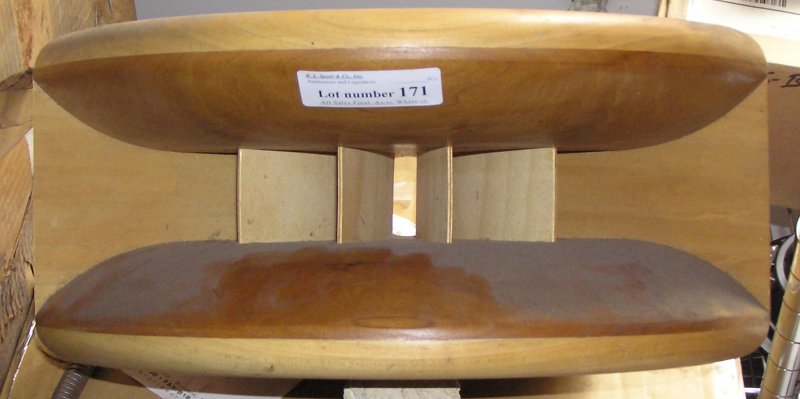
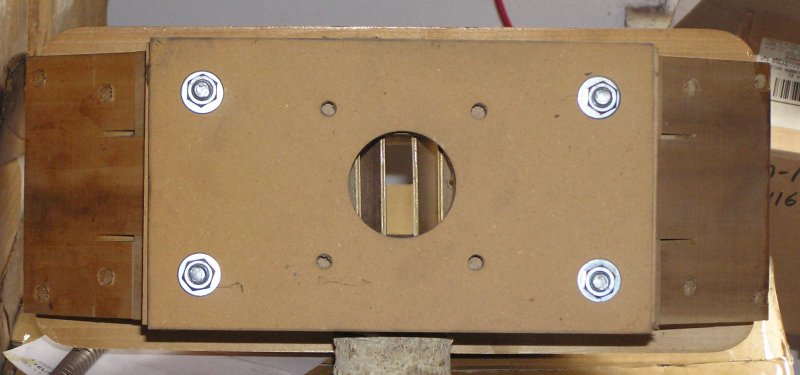
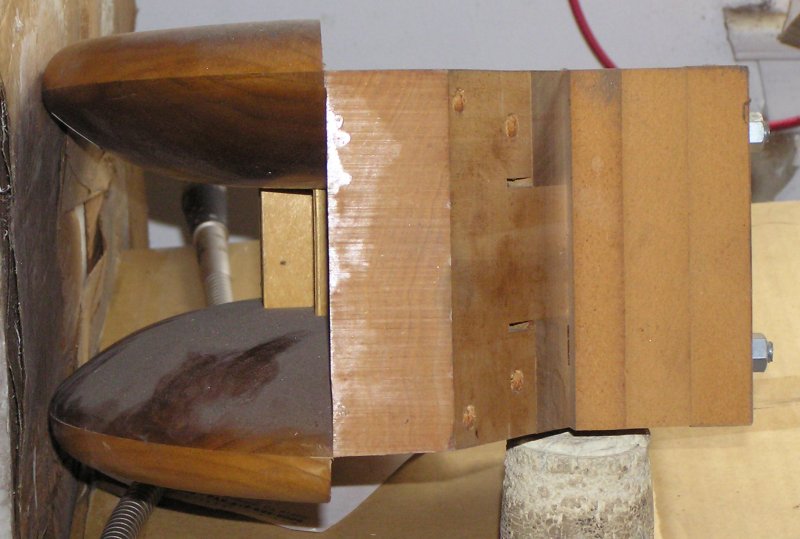
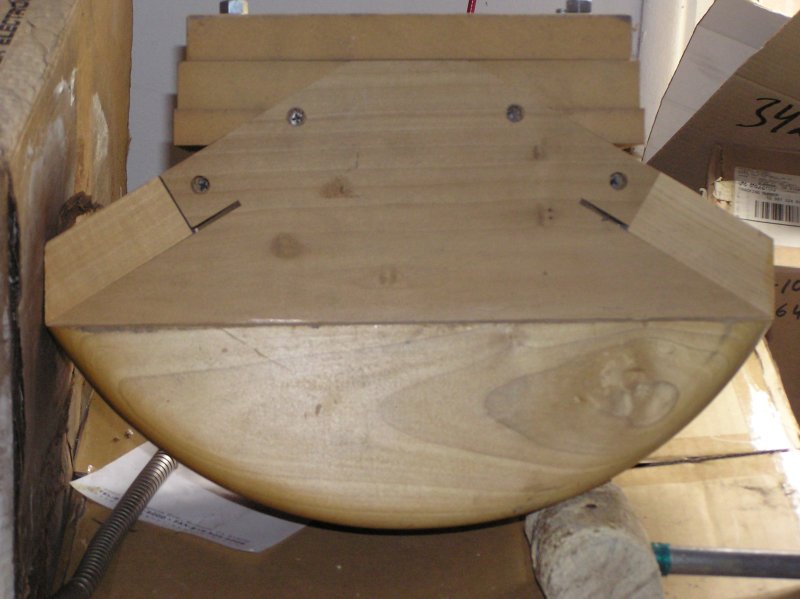
These and more pictures were posted here.
If you take a closer look, you'll find many features of these (older) horns are still used today, like the throat transition and the vanes (RCF HF950).
These and more pictures were posted here.
If you take a closer look, you'll find many features of these (older) horns are still used today, like the throat transition and the vanes (RCF HF950).
Last edited:
From the JMLC thread I picked up the idea that a lot of the Horns on the popular market are more so waveguides, than a horn, in the truest sense, and that a horn properly supports the lowest intended note via throat length and that mouth cut-off isn't really a respectable factor, but more of a marketing ploy to sell, waveguides, as horns, driven by a market desire of smaller sized products....that is pretty much a reiteration from Jean himself...
What say you?
What say you?
From the JMLC thread I picked up the idea that a lot of the Horns on the popular market are more so waveguides, than a horn, in the truest sense, and that a horn properly supports the lowest intended note via throat length and that mouth cut-off isn't really a respectable factor, but more of a marketing ploy to sell, waveguides, as horns, driven by a market desire of smaller sized products....that is pretty much a reiteration from Jean himself...
What say you?
I fully agree to this. And I am working on several designs in order to favor the horizontal plane of such horns and therefore provide a better dispersion. In the sense of this thread a 2-way systems needs a large horn and a long horn.
Yeah, keep your waaaaaave-guides out of my thread

Joking guys,
OK heres another argument I got myself into, I didn't necessarily support the idea of a driver being "too big" for a given room size. I've seen it talked about in this thread but since the search thread function doesn't work, I won't find it right now but I do recall a small discussion about how Wave forms need room to mature being a fallacy, and I agree. The guy did make a coherent sentence " Waves must mature and dissipate, otherwise phase cancellation, destructive and complimentary SPL can alter the perceived EQ curve considerably while causing great perceived distortion." but I think hes just gas lighting. What do you guys think. I think the main factor in listening distance is the number of drivers and directivity

Joking guys,
OK heres another argument I got myself into, I didn't necessarily support the idea of a driver being "too big" for a given room size. I've seen it talked about in this thread but since the search thread function doesn't work, I won't find it right now but I do recall a small discussion about how Wave forms need room to mature being a fallacy, and I agree. The guy did make a coherent sentence " Waves must mature and dissipate, otherwise phase cancellation, destructive and complimentary SPL can alter the perceived EQ curve considerably while causing great perceived distortion." but I think hes just gas lighting. What do you guys think. I think the main factor in listening distance is the number of drivers and directivity
- Home
- Loudspeakers
- Multi-Way
- Is it possible to cover the whole spectrum, high SPL, low distortion with a 2-way?
